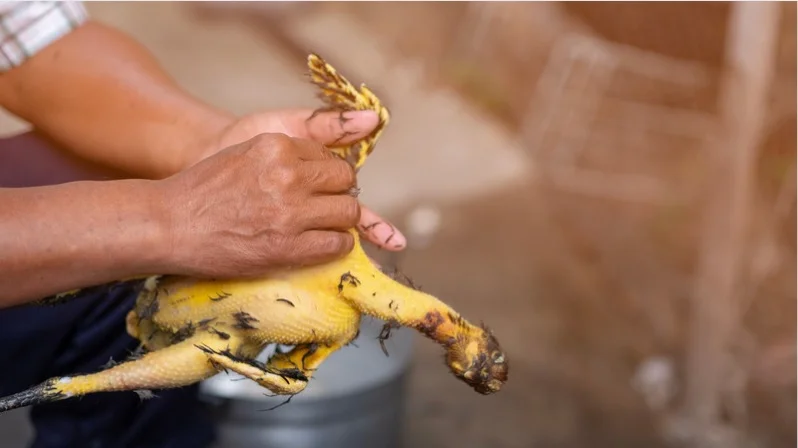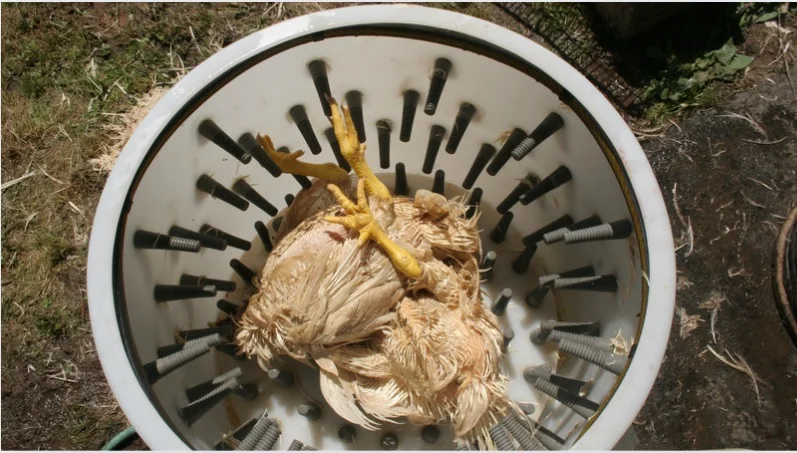The term “pluck” refers to the action of grasping something and quickly removing it from its place. In the context of poultry preparation, “plucking” specifically means removing feathers from chickens or similar fowl in preparation for cooking. Consequently, a “plucker” is an individual or device dedicated to this task. This article explores the historical, practical, and modern aspects of plucking, detailing the role of pluckers in the culinary and agricultural industries.
Historical Perspective
Plucking chickens is an age-old practice that dates back to the domestication of poultry. The process of removing feathers from chickens was traditionally done by hand, a labor-intensive task that required skill and patience. Early methods involved scalding the bird in hot water to loosen the feathers before manually pulling them out. This method, though effective, was time-consuming and demanded physical effort.
In the past, plucking was an integral part of rural life and small-scale farming. Families raised their own chickens, and plucking was a necessary skill passed down through generations. The advent of larger poultry farms and the industrialization of food production in the 19th and 20th centuries brought significant changes to this practice. The need for efficiency and higher output led to the development of mechanical pluckers, revolutionizing the poultry industry.
The Role of a Plucker
Manual Plucking
Despite advances in technology, manual plucking remains a skill practiced in various contexts, especially in smaller farms, rural areas, and for specialty or organic poultry. Manual plucking is often preferred for its precision and the care it affords to the bird’s skin, which can be important for certain culinary applications where the presentation is crucial.
Manual pluckers use several techniques to remove feathers efficiently:
- Scalding: The bird is dipped in hot water (typically between 125°F to 150°F) for about 30 seconds to a minute. This process helps to loosen the feathers, making them easier to remove.
- Pin Feathers: These are small, stubborn feathers that require additional attention. Pluckers often use tweezers or a knife to remove these remaining feathers.
- Dry Plucking: This method skips the scalding process and involves plucking the feathers while they are dry. Although more time-consuming, it can yield better skin quality, which is sometimes preferred in gourmet cooking.

Mechanical Plucking
Mechanical pluckers have become a staple in commercial poultry processing. These machines significantly reduce the time and labor required for plucking, allowing for the processing of large numbers of birds quickly and efficiently. There are several types of mechanical pluckers:
- Drum Pluckers: These machines consist of a rotating drum with rubber fingers that pluck the feathers as the bird is tumbled inside. Drum pluckers are commonly used in commercial settings due to their high efficiency.
- Tabletop Pluckers: Smaller and more portable, these machines are suitable for small-scale operations. They function similarly to drum pluckers but are designed for lower volume processing.
- Handheld Pluckers: These are electric devices with rotating heads covered in rubber fingers. They offer a balance between manual and mechanical plucking, providing efficiency while maintaining some level of control.
Innovations in Plucking Technology
The poultry industry continuously seeks improvements in plucking technology to enhance efficiency, reduce labor costs, and maintain high standards of hygiene and quality. Recent innovations include:
- Automated Plucking Systems: These systems integrate plucking into a fully automated processing line, reducing human intervention and potential contamination. Sensors and computer controls optimize the plucking process, ensuring consistent quality.
- Feather Removal Additives: Some modern systems use chemical additives in the scalding water to further loosen feathers, facilitating easier removal.
- Environmental Considerations: Newer plucking machines are designed to be more energy-efficient and environmentally friendly, reducing water and energy consumption.
The Importance of Plucking in Culinary Applications
The plucking process significantly impacts the quality and presentation of poultry. Properly plucked chickens are not only more visually appealing but also better suited for various cooking methods. The skin, left intact, helps retain moisture and flavor during cooking, resulting in a juicier and more flavorful dish.
Specialty Poultry
In the gourmet food industry, the method of plucking can be a mark of quality. Dry-plucked birds, for example, are often preferred for their superior skin texture and appearance. Specialty poultry, such as heritage breeds or organically raised birds, are frequently plucked by hand to ensure the highest quality.
Culinary Techniques
Certain culinary techniques, such as roasting or smoking, benefit greatly from the intact skin provided by careful plucking. The skin acts as a barrier, keeping the meat moist and absorbing flavors from marinades and seasonings.
The Economic and Social Impact
Plucking chickens, whether done manually or mechanically, plays a crucial role in the poultry supply chain. The efficiency of this process directly impacts the cost of poultry products and the economic viability of poultry farms.
Employment
In regions where manual plucking is prevalent, this skill provides employment opportunities and supports local economies. Skilled pluckers are essential in maintaining the quality and consistency of poultry products.
Technological Advancements
The development and adoption of mechanical pluckers have transformed the poultry industry, leading to higher production rates and lower labor costs. However, this shift also necessitates a workforce skilled in operating and maintaining these machines, creating new job opportunities in technical and engineering fields.
Conclusion
The plucker, whether an individual or a machine, is an indispensable component of poultry preparation. From its historical roots in manual labor to modern mechanical innovations, plucking has evolved to meet the demands of both small-scale and large-scale poultry processing. The skill and efficiency of pluckers directly influence the quality, presentation, and flavor of poultry, highlighting their essential role in the culinary and agricultural landscapes. As technology continues to advance, the art and science of plucking will undoubtedly continue to evolve, ensuring that this age-old practice remains integral to the poultry industry.









